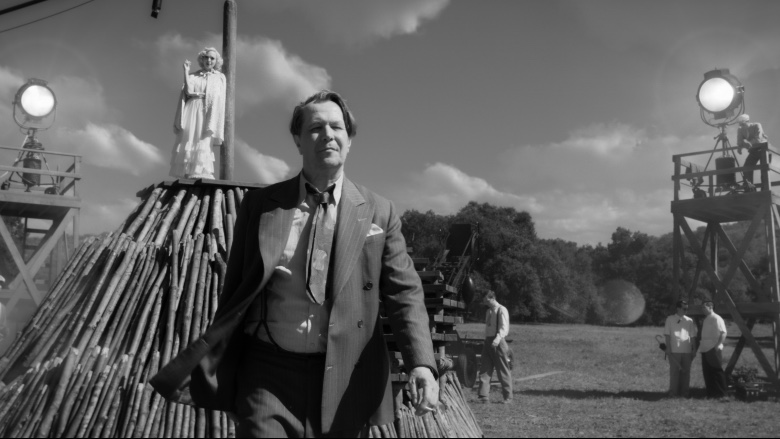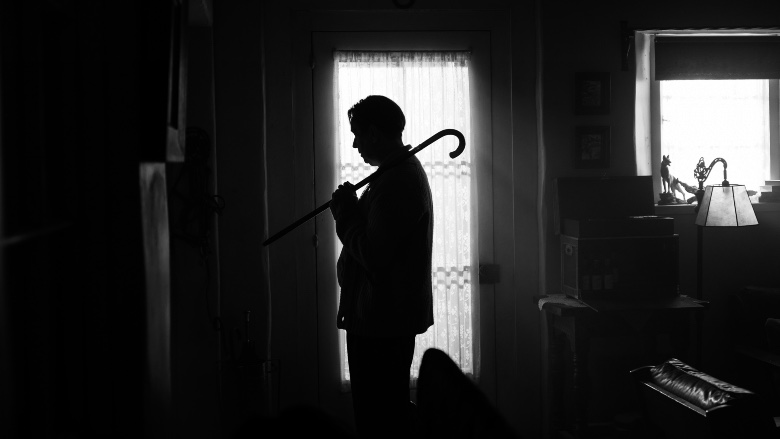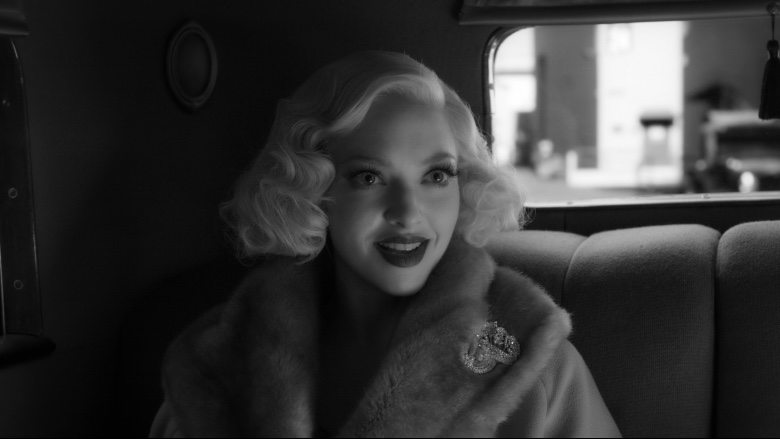
You only have to watch the trailer for Mank, Director David Fincher‘s first movie since 2016’s Gone Girl, to realize it’s going to be a bonafide contender in many craft and technical races come 2021. That’s not just because it’s a period piece, or that Fincher uses the conceit of making his first black and white movie well into the 21st Century, but because he relied heavily on finding the right people who could pull off what he’s attempting to do.
In the film, Gary Oldman plays Hollywood screenwriter Herman J. Mankiewicz, who in 1940 was hired by Orson Welles (Tom Burke) to write the screenplay for what would become Citizen Kane. With his faithful British assistant Rita (Lily Collins) scribbling Mank’s ideas and words into steno pads, Mankiewicz fights against the debilitating alcoholism that has made him somewhat of a pariah in Hollywood, reflecting on his contentious relationship with millionaire William Randolph Hearst (Charles Dance) and friendship with Hearst’s mistress Marion Davies (Amanda Seyfried), things that would form the basis for the duo’s Oscar-winning screenplay years later.
Working from a script by his late father Jack Fincher, the acclaimed filmmaker has chosen to pay homage to Welles and what many consider to be his greatest work by telling the story of its making in the most meta way possible – by making Mank as Welles might have done in his heyday. This isn’t just about simply making it a black and white movie but about working with heads of department, crafts and crew who understand how and why Welles’ work is religiously relished by cinephiles.
And yet, Mank isn’t a movie about Welles or even Citizen Kane, instead being about the general discourse around Hollywood in the mid-to-late 30s, the power held by Hearst and his vast wealth, and partially framed by the unsuccessful run for California Governor by Upton Sinclair in an attempt to do something about the poverty-stricken state.
Those who appreciate Mank’s place in Hollywood history might enjoy all the references to those floating within the writer’s immediate circles – names like Louis Mayer, Irving Thalberg and others – but there’s something quite opaque and hard to see through in terms of the point of making this movie in the first place, other than as Fincher’s tribute to Welles by making his father’s sole produced screenplay.

Even if the suitably-dated screenplay might not be that easy to get through, it’s impossible to ignore the work by Cinematographer Erik Messerschmidt – his feature film cinematography debut, no less! – and two-time Oscar-winning Editor Kirk Baxter in his fifth collaboration with Fincher. The lighting is perfect, as is Messerschmidt’s framing, to make it really feel as if this movie could have been made by Welles in 1940. Likewise, there’s such a perfection to Baxter’s editing that makes him so well-suited to Fincher’s legendary style of doing dozens and dozens of takes for every scene, finding exactly what is needed to maintain a brisk pace with the focus remaining on Oldman’s character and his indefatigable personality.
Mank does look great indeed, and it’s not just because it’s a black and white period piece, but one that allows Production Designer Donald Graham Burt and his team, including Art Directors Chris Craine and Dan Webster, Set Decorator Jan Pascale and Costume Designer Trish Summerville, to have a grand old time recreating 1930s Hollywood and all the glitz and glamour that goes with it. Being able to recognize the likes of Greta Garbo, Clark Gable and other luminaries despite very small appearances is as much a credit to how the lesser-known actors are dressed as the actor in the role. (Even so, one has to give enormous props to Casting Director Laray Mayfield, making her eighth film with Fincher, who was tasked with filling so many roles, many of whom barely uttering a single line or two.)
Similarly, it must have been an utter and absolute joy for the art team to pair with a combination of building crew and Visual Effects — made-up of teams from Artemple, Territory Studio, Savage and ILM, the latter supervised by Pablo Helman from The Irishman — to reanimate the RKO sound stages and resurrect many of Hollywood’s iconic landmarks at a time when it was the entertainment capitol of the universe. The diligent work of taking us back to a Hollywood even older than the one in Quentin Tarantino‘s Once Upon a Time … in Hollywood also makes Fincher’s latest a joy to behold.

Oldman gives another fine performance, his dialogue frequently made up of far-too-clever quips, as he successfully drinks his career into oblivion by being too honest by half. Even so, it’s Seyfried’s role as Marion Davies that really shines, not only since she captures the popular actresses’ wit and grace so well but also by the way she’s dressed, and the work by Hair and Make-Up led by Kimberley Spiteri and Gigi Williams. Her scenes with Oldman are very much the heart and soul of Mank, the ones that perfectly encapsulate the zeitgeist of the times and Mank’s place in it.
If you weren’t to read the credits for Mank in advance, you may be slightly surprised that the score is composed by frequent Fincher collaborators, Trent Reznor and Atticus Ross – the two creative leads for industrial rock group Nine Inch Nails. None of the technical synth-based stylings of the duo are anywhere to be found, instead going for more traditional and very analog music that you would have heard during the era As Mrs. Reznor/Ross continue their collaboration with Fincher, they’ve found a way to create a score that provides so much of the film’s DNA along with the other key departments. It might not be something any will be expecting to be delivered so ably by the Social Network Oscar winners, but every single scene has their music creating a warm bed of tension Wells would have appreciated.
Mank is such an interesting experimental departure for Fincher, one that might not immediately connect with his more casual fans. Regardless, it’s a great looking and thought-provoking film that bears repeat viewings in order to absorb all the underpinning context and casual references that drove this particular era of Hollywood.
Mank will open in theaters across America this week and then be available to view via Netflix streaming on December 4.





